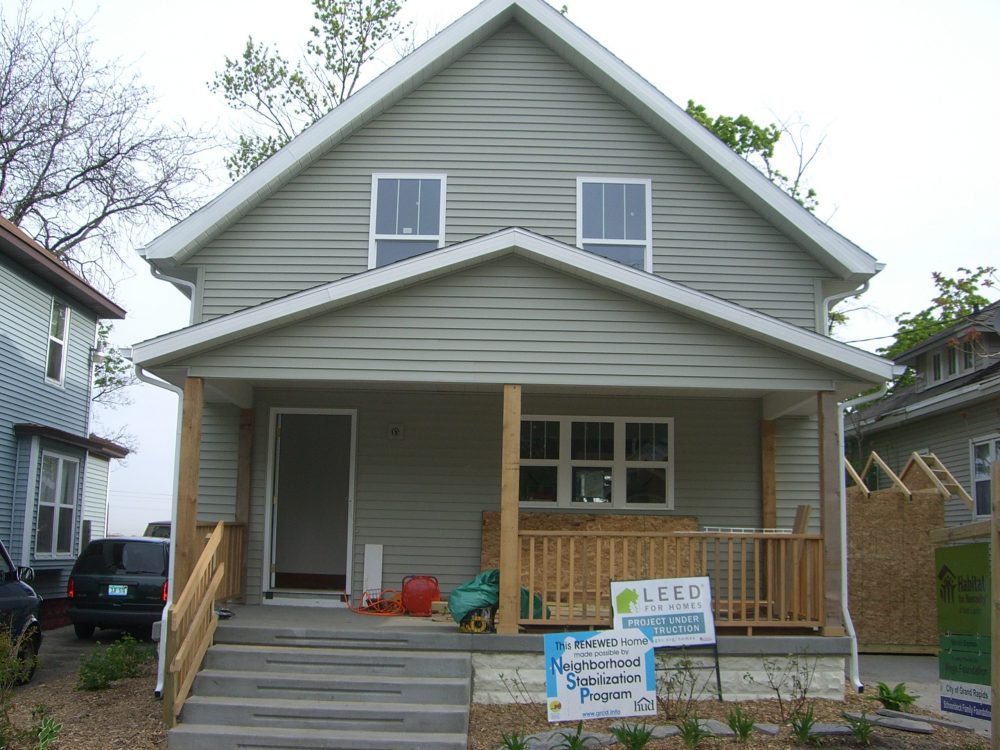I must admit I was surprised to see Project Rebuild resurface in the Obama administration’s 2014 budget proposal. If there was ever an idea whose time had come and gone, it was that one, which got no traction when it was first proposed in 2011.
It’s not likely to become a reality this time either, but the fact that it has reappeared in the administration’s budget is significant for what it says about their thinking—or lack of it—about housing and neighborhood issues.
Project Rebuild, for those of you who just tuned in, is to the Neighborhood Stabilization Program what a Hummer is to a Mini Cooper. Not smarter, not more efficient, just much, much bigger. It would provide $15 billion for NSP-type activities—with a few tweaks to allow more commercial and job-generating projects—$10 billion would be allocated by formula and the rest through a competitive process. Money would have to be spent within three years.
More federal money for cities and non-profits—what’s not to like?
Unfortunately, a great deal. In an age of growing problems and a shrinking social safety net, proposing to put $15 billion on the street for the ostensible purpose of neighborhood stabilization, without any clear idea of whether it in fact will stabilize neighborhoods, or whether it’s a particularly efficient and cost-effective way of doing so, is simply not good enough.
The evidence from the NSP experience since 2009 is that it is neither. Over the past four years, HUD grantees have spent most of the $7 billion authorized by Congress for NSP 1, 2, and 3. According to HUD’s Project Rebuild fact sheet, this money will end up rehabbing or building “nearly” 50,000 units of housing, along with smaller totals for demolitions and homeowner assistance. A back of the envelope estimate suggests that each one of these units cost upwards of $100,000 in federal dollars. That’s a lot of money, when one considers that in many of the neighborhoods where NSP money was used, one could—and still can—buy a fairly decent house for less than that.
Although there’s little data one way or another, the accumulation of experience with the program suggests that in most cases, NSP expenditures have had little effect on stabilizing neighborhoods, and have leveraged little private investment. HUD’s own analysis, where areas with clustered NSP investments were compared on changes in house prices and vacancies to other areas in the same community with similar market conditions, showed—despite HUD’s efforts to put a positive spin on it—that the outcomes were no different from what would have been expected from pure chance.
This is hardly surprising, for many reasons. Some grantees did in fact start out with the goal of using their NSP money strategically. Faced with tight deadlines to use the funds, though, and a far slower process of acquisition than they expected, most ended up latching onto whatever properties they could. Similarly, faced with difficulty raising private capital to leverage their NSP money, and again under pressure to spend all the money by the deadlines imposed by Congress, grantees put more federal money into each unit. Faced with too few homebuyers who could qualify for mortgages, grantees converted many of their units into rentals. One grantee all but gave up on single family rehabs, deciding to use their money on a couple of large, distressed garden apartment projects. Ironically, the ground rules of the program worked against targeted, leveraged efforts, at the same time as program staff and consultants were calling for just that.
Furthermore, as anyone who works in a distressed urban neighborhood knows, demolishing or rehabbing vacant houses may be part of the process of stabilizing a neighborhood, but it is not in itself neighborhood stabilization, especially when you can only tackle a handful of the houses that need work. Fixing a handful of houses, while other nearby houses are being foreclosed and abandoned, is not likely to stabilize a neighborhood, particularly if you’re not dealing with the many other issues—from markets to safety to quality of life—undermining the neighborhood at the same time.
NSP was not a bad program. Fixing up houses and demolishing others is a useful activity. It improved many people’s lives, and provided a much-needed financial shot in the arm for local governments and CDCs at a particularly tough moment. But it didn’t stabilize neighborhoods or change housing markets. Nor will Project Rebuild.
The sad thing is that we know a lot about how to stabilize neighborhoods and change neighborhood housing markets. We know that neighborhoods improve when people decide to start buying houses there, and when homeowners start putting more money into their homes. And we know at least to some extent what some of the factors—greater safety, better public services, greater consumer confidence and more—are that motivate them. We can design a far, far better program to stabilize neighborhoods, and if we design it so it leverages the energy and resources of residents, homebuyers, fixer-uppers, and financial institutions, we can create an effective national program for a lot less than $15 billion in scarce federal money. I’d like to think that there are people in HUD and the White House who know this, too.
Next month I’ll write about what a program like that might look like.
(This post is part of a series on the president’s 2014 budget.)
(Photo Courtesy of Alan Mallach)






Mr. Mallach-
As always, I appreciate your insights on community redevelopment. Your comments on NSP are right— for instance, we often did not have time to do really strategic investments, rather we were forced buy houses in a hurry. Also, as you said, we did not have the time nor incentive to leaverage the NSP funds we spent with additional credit.
And yes, most of our NSP houses ended up as rentals. We do, though, plan to sell them to owner-occupants when the market here evolves— that seems to be happening as we speak.
NSP 3, on the other hand, we were a bit better prepared to use strategically. We continue to invest almost entirely in a very compact area. The ‘revitalization’ effect should be pretty dramatic, we believe.
All that said, I suspect the greatest impact that NSP will end up having here is the stabilization of this community development corporation. You have recognized the value of strong, stable CDCs not only to conduct work, but to advocate for and with their communities. I think it’s fair to say that NSP saved my agency from insolvency during rough times and ‘endowed’ it in such a way that it’s survival is assured for many years to come. We like to think that’s money well invested.
Steve Lockwood, Executive Director
Frayser Community Development Corporation
Memphis, Tennessee